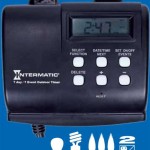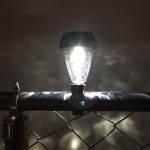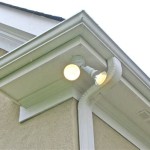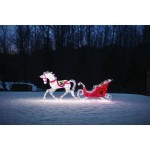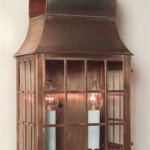Outdoor Lighted Peace Sign: Illuminating Symbolism
The outdoor lighted peace sign serves as a visually arresting and culturally significant emblem, often employed to express sentiments of harmony, unity, and hope. These illuminated symbols range from simple, single-bulb designs to elaborate, multi-colored displays, finding placement in residential yards, public spaces, and commercial settings. Understanding the nuances of their construction, cultural context, and practical considerations is crucial for appreciating their role in contemporary society.
The peace sign itself, a design consisting of a circle intersected by three lines, has a rich history. Originating in 1958 in the United Kingdom as a symbol for the Campaign for Nuclear Disarmament (CND), it quickly transcended its initial purpose to become a universally recognized symbol of peace. Gerald Holtom, a professional designer, created the original symbol by combining the semaphore signals for the letters "N" and "D," representing nuclear disarmament. The circle encompassing the design signified totality, the earth, and the collective responsibility for peace. Its adoption by anti-war movements in the United States during the Vietnam War further solidified its association with peace and non-violence. The amplification of this symbol through its incorporation into outdoor lighted displays allows it to communicate its message more broadly, particularly during nighttime hours.
Construction and Materials of Outdoor Lighted Peace Signs
The construction of an outdoor lighted peace sign necessitates careful consideration of weather resistance, durability, and electrical safety. Several materials are commonly employed, each offering distinct advantages and disadvantages.
One prevalent material is metal, particularly steel or aluminum. Metal frames provide structural integrity and can withstand the elements, especially when treated with rust-resistant coatings. These frames typically serve as the foundation for mounting the lighting elements. The metal can be cut and welded into the peace sign's shape, ensuring clean lines and precise angles. The choice between steel and aluminum often depends on cost and weight considerations. Aluminum is lighter than steel, making it easier to handle and install, while steel offers greater strength and resistance to bending.
Another material frequently used is acrylic or polycarbonate plastic. These materials are lightweight, shatter-resistant, and easily molded into various shapes. They are particularly suitable for creating a translucent or opaque surface that diffuses the light evenly. Acrylic is often used for smaller signs or when a glossy finish is desired, while polycarbonate offers greater impact resistance, making it ideal for larger signs or those exposed to potential vandalism.
The lighting elements themselves typically consist of LED (Light Emitting Diode) bulbs or strips. LEDs have become the preferred choice due to their energy efficiency, long lifespan, and ability to produce a wide range of colors. They consume significantly less power than traditional incandescent bulbs, reducing energy costs and environmental impact. Their extended lifespan minimizes the need for frequent replacements, further contributing to their cost-effectiveness. Furthermore, LEDs are available in various brightness levels and color temperatures, allowing for customization of the sign's visual impact. They are often encased in weather-resistant housings to protect them from rain, snow, and other environmental factors.
Wiring and electrical components are crucial for ensuring safe and reliable operation. All wiring must be rated for outdoor use and protected from moisture. A ground fault circuit interrupter (GFCI) outlet is essential to prevent electrical shock in the event of a short circuit. The power supply must be appropriately sized to handle the load of the lighting elements. Many outdoor lighted peace signs incorporate low-voltage power supplies for added safety, reducing the risk of electrical hazards.
Cultural and Symbolic Significance
Beyond its literal representation, the outdoor lighted peace sign carries a multifaceted cultural and symbolic weight. It serves as a visual reminder of the ongoing pursuit of peace and understanding in a world often marked by conflict and division. Its presence in public or private spaces can inspire reflection on the values of non-violence, tolerance, and empathy.
The use of light enhances the symbol's impact, drawing attention to its message during the hours of darkness. Light has long been associated with hope, enlightenment, and guidance, reinforcing the positive connotations of the peace sign. The illumination transforms the symbol from a static image into a dynamic beacon, radiating its message to a wider audience.
The specific color of the light can further amplify the symbol's meaning. White light conveys purity and clarity, while blue light can evoke feelings of tranquility and serenity. Green light is often associated with environmentalism and sustainability, while rainbow-colored lights represent diversity and inclusivity. The choice of color can reflect the specific values or message that the sign's owner wishes to convey.
The location of the outdoor lighted peace sign also contributes to its cultural significance. When placed in a residential yard, it can serve as a personal statement of commitment to peace and non-violence. When displayed in a public space, it can act as a collective reminder of the importance of these values for the community as a whole. Its presence in commercial settings can signal a company's commitment to social responsibility and ethical business practices.
Practical Considerations for Installation and Maintenance
Installing and maintaining an outdoor lighted peace sign involves several practical considerations to ensure its longevity, safety, and visual appeal. Proper installation is crucial for preventing damage to the sign and ensuring its stable placement.
The mounting surface must be strong and stable enough to support the weight of the sign. Depending on the size and design of the sign, it may require mounting on a post, wall, or other structural support. The mounting hardware should be appropriate for the surface and weather-resistant to prevent corrosion. Professional installation is recommended for larger signs or those requiring complex electrical connections.
Regular maintenance is essential for preserving the sign's appearance and functionality. This includes cleaning the surface to remove dirt, dust, and debris. A mild soap and water solution is typically sufficient for cleaning acrylic or polycarbonate surfaces. Metal surfaces may require periodic rust removal and repainting to prevent corrosion.
The lighting elements should be inspected regularly for signs of damage or burnout. LED bulbs have a long lifespan, but they can eventually fail. Replacement bulbs should be of the same type and wattage to ensure consistent illumination and prevent overloading the electrical system. Damaged wiring should be repaired or replaced immediately to prevent electrical hazards.
During periods of severe weather, such as high winds or heavy snow, it may be necessary to temporarily remove the sign to prevent damage. This is particularly important for larger signs that are more susceptible to wind damage. Storing the sign in a safe, dry location during extreme weather can prolong its lifespan and prevent costly repairs.

Lighted Hanging Star Or Peace Sign The Lakeside Collection

Peace Sign Symbol Holiday Lighting Display Blue Outdoor Rope Lights Light

Vintage Illuminated Marquee Peace Sign

Hand Made Special Large Huge Vintage Marquee Art Fully Outdoor Peace Sign Channel 35x35 Custom By Aranacci Custommade Com

Pin On Outdoor

Do It Yourself Peace Sign Light Art

Lighted Peace On Earth Sign

Hand Made Peace Sign Lighted Metal Marble Rust Finish Light Fixture By West Vintage Trading Company Custommade Com

Indoor Outdoor Lighted Americana Flag Peace Sign Wall Art Target

Peace Sign Wreath Light Art Hippie Crafts
Related Posts
